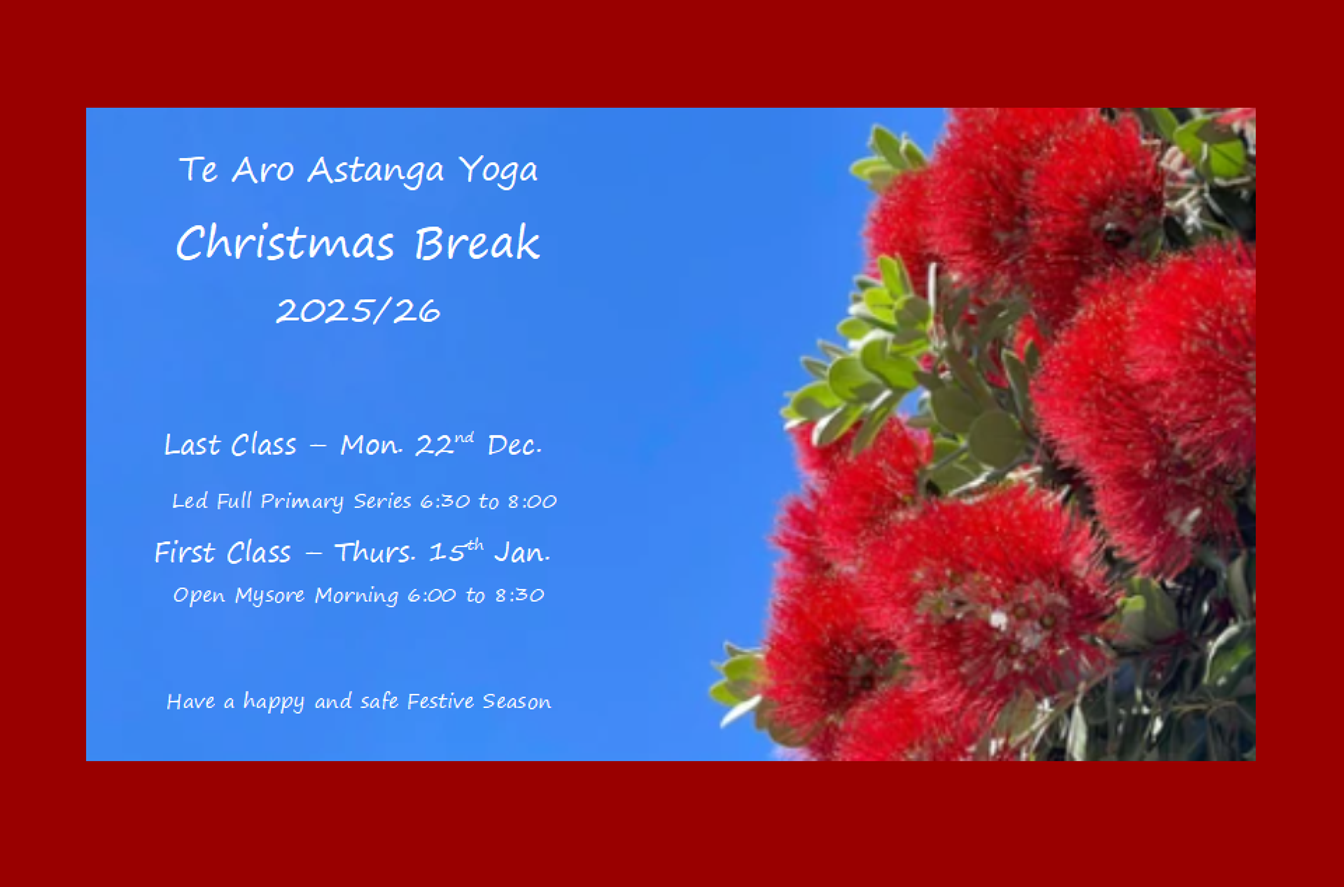48 Week Slowly, Slowly Method
TAAY Summer Break 2025/26
As 2025 draws to a close I’d like to thank everyone who has supported Te Aro Astanga Yoga this year. I recognise how difficult the year has been financially for many of you and appreciate that you have made the commitment to continue to practice Ashtanga Yoga with us. Te Aro Astanga Yoga is surviving thanks to you! I hope to see you all for a fantastic 2026.
Last Class 2025: Monday 22nd Dec. — Led Full Primary Series 6:30 to 8:00 am.
First Class 2026: Thurs. 15th Jan. — Open Mysore Morning Class 6:00 to 8:30 am
I hope that you and your whānau have a safe and happy Festive Season.

Awesome post Mike. I have to say, it has been really comfy being able to practice at the shala. One of the first places that gave me a sense of ‘community’ when Bryant and I moved to Wellington. Thanks for being a gentle giant (in a tall kind of way way).
This post sums up the joy I have felt in rediscovering my practice this year. I practised fairly solidly several years ago and really enjoyed myself. However, my focus became pushing and pushing my body further and just focussing on learning the next asana. I have hyper mobile joints and as a result I think that I did myself a few injuries. I was warned off yoga by several medical professionals and did not return to my practice for several years. This summer while yoga was shut, I began to practice again, with a mindfulness to not pushing my joints too far and a focus on breathing. This time I rolled out my mat every day at home and just did a little at time, even just five sun salutes and then stopped. I have come back to the practice in the new year and have discovered with a calm attitude I am getting much more out of my practice. The high has been replaced by a meditative calm. I am not looking around the room to see who knows more than me and who can stretch further, I am satisfied each time with the practice I have done that day, the better sleep I am getting, the feeling of strength in my body, and my calm mind. Totally recommend the slow approach!